1966 Ford Galaxie 500 XL Refurbishment : 094 Power Window Regulators, pt 2 : Electric Motor
2023, November 14
1 - 2 - 3 - 4 - 5 - 6 - 7 - 8 - 9 - 10 - 11 - 12 - 13 - 14 - 15 - 16 - 17 - 18 - 19 - 20 - 21 - 22 - 23 - 24 - 25 - 26 - 27 - 28 - 29 - 30 - 31 - 32 - 33 - 34 - 35 - 36 - 37 - 38 - 39 - 40 - 41 - 42 - 43 - 44 - 45 - 46 - 47 - 48 - 49 - 50 - 51 - 52 - 53 - 54 - 55 - 56 - 57 - 58 - 59 - 60 - 61 - 62 - 63 - 64 - 65 - 66 - 67 - 68 - 69 - 70 - 71 - 72 - 73 - 74 - 75 - 76 - 77 - 78 - 79 - 80 - 81 - 82 - 83 - 84 - 85 - 86 - 87 - 88 - 89 - 90 - 91 - 92 - 93 - 94 - 95 - 96 - 97 - 98So now I'll break down what I found in comparing an OEM 1960's window motor, an older NOS ACI and the most recent ACI motor for these windows. The differences are pretty staggering. Let's get into it.
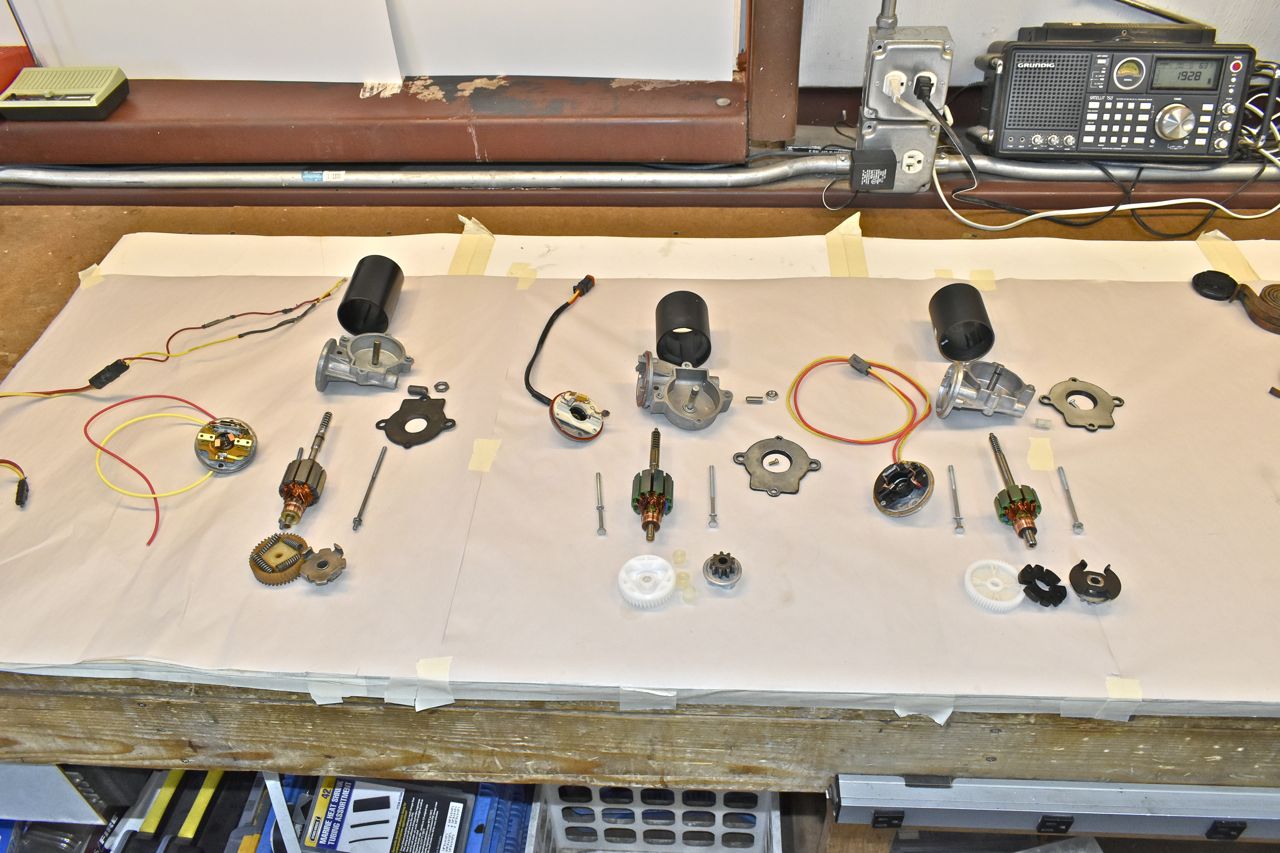
Starting from the left is the original 1960's Ford window lift motor. In the centre is the 3-4 year old brand new ACI and on the right is the latest from ACI. The first thing you'll probably notice is the latest ACI motor (right) has a reduced sized armature magnetic area and that each of the worm gears has a different torque damper schema.
I feel this important to delve into to understand what varying kinds of designs and quality you can expect now-a-days. As a spoiler in no way would I use the latest versions of ACI motors (right). Whilst I was working on the power windows for the 1966 galaxie 500 XL, I did have a bit of luck and found a complete worn out set of regulators for the 1968 XL 2 door coupe and they had motors attached. The original Ford OEM motor on the left is one of those 1968 motors.
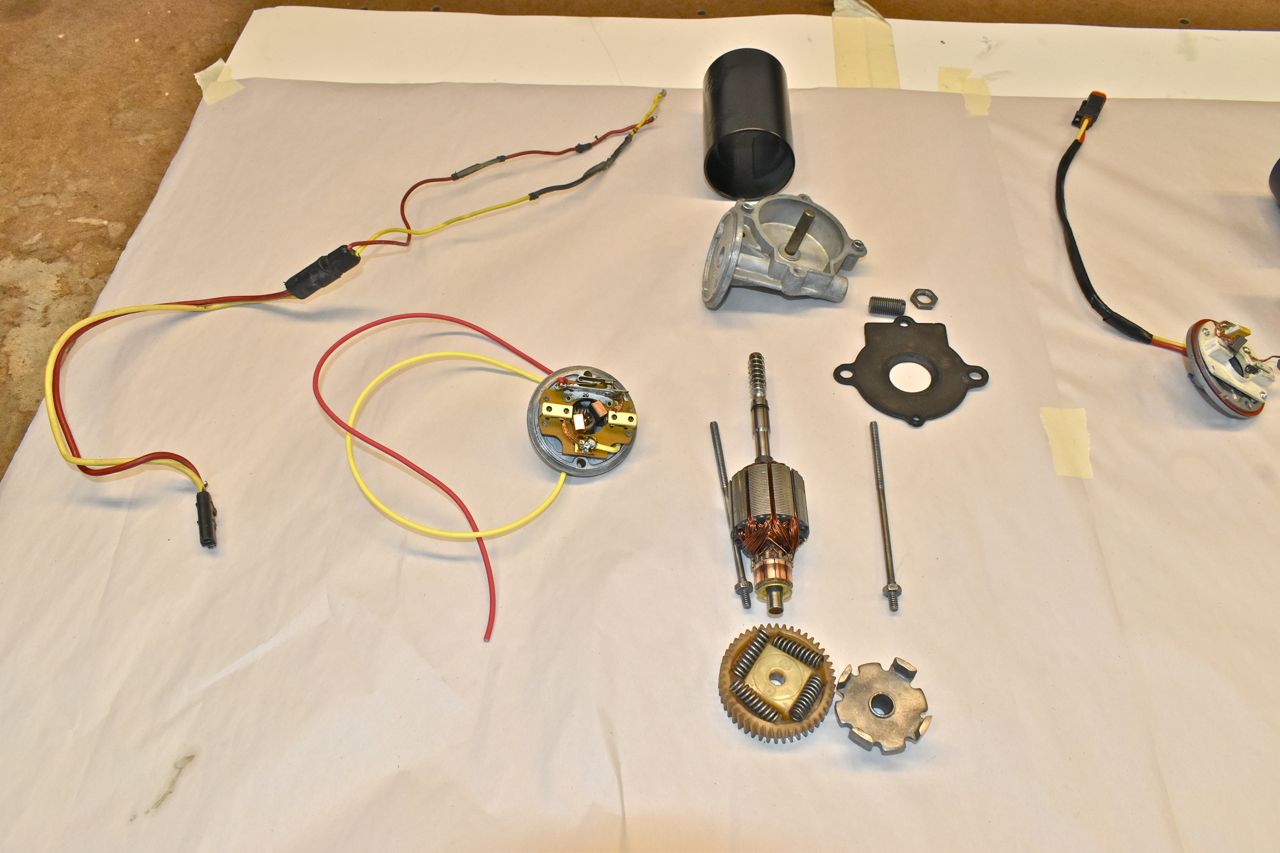
Here's a close up view of the 1968 Ford motor. I went through this motor and all the others withcidentally, it was in excellent shape sans the wiring. I replaced the lead wires with GXL automotive wire in the same colors. The old wiring would crack its insulation if you bent it and expose the bare conductor. In other words, old automotive wire is just a fire and safety hazard.
This 1968 Ford motor uses a metal armature end play adjustment screw with jam nut. This is actually a really well built, if not overbuilt, motor. I really like it and wish they could all be like this.
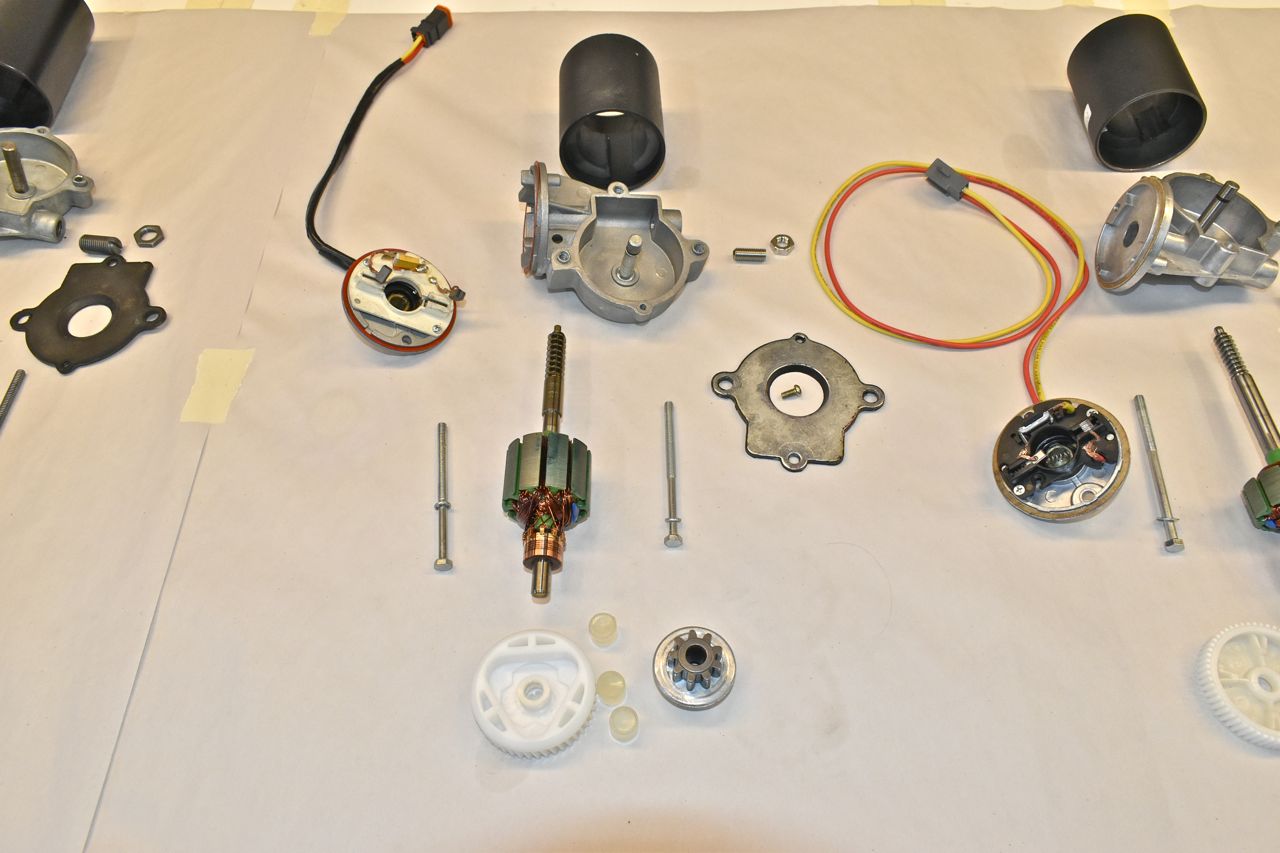
This is the older NOS ACI reproduction motor. It's satisfactory and built close enough to the spirit of the original design. The only real problem was the disintegrating plastic armature end play screw they used. That had to go and I found some domed dished metal set screws and jam nut to replace them. This is mandatory for these, but otherwise they are ok to use.
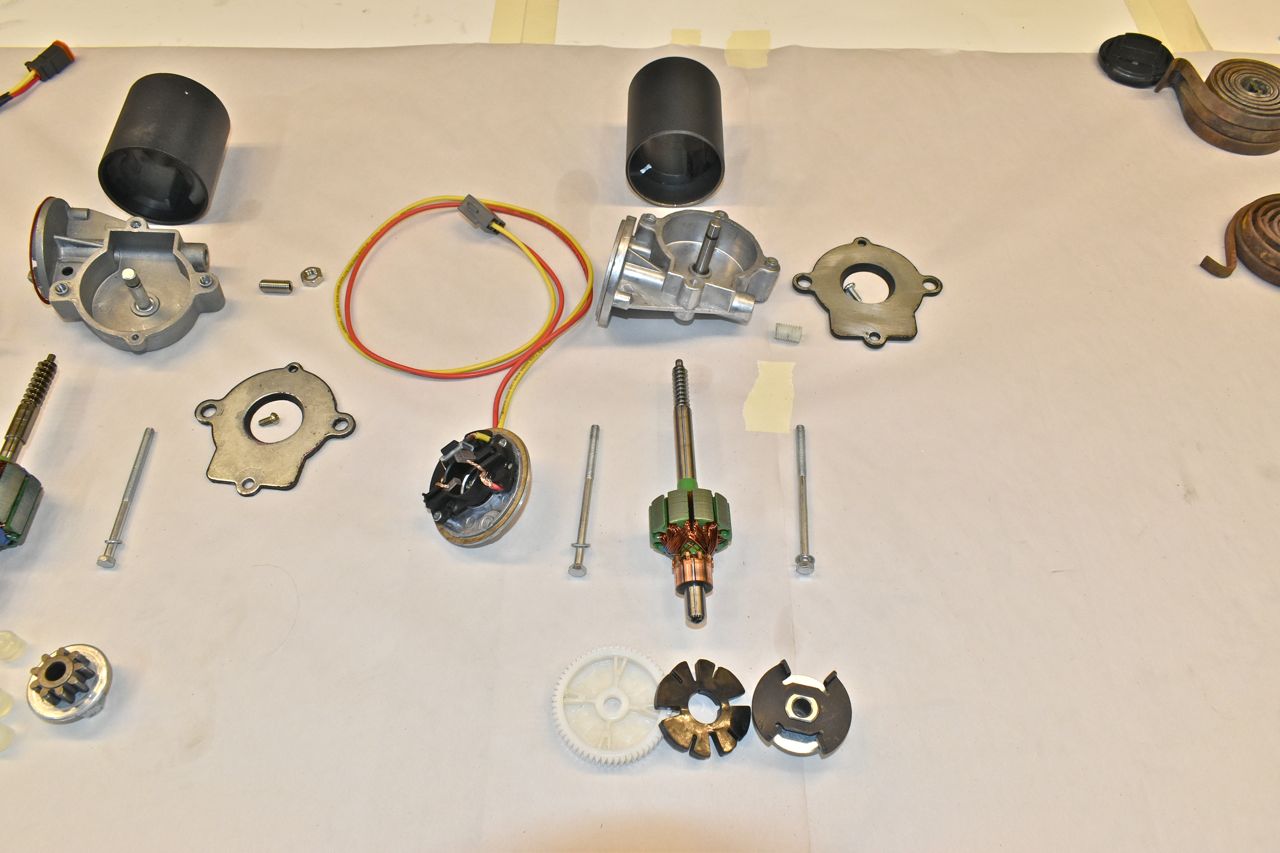
This is the newest rendition of the window motor from ACI and is quite frankly a turd monkey in my opinion. They drastically reduced the size of the armature magnetic area and also reduced the size of the magnets in the case shell. They skimped on machining of the armature as well as instead of using a cast aluminum worm gear housing this is a cheaper die cast housing. It's just cheap junk at this point compared to what they used to make and the original OEM motors.
Let's delve into these further with more details.

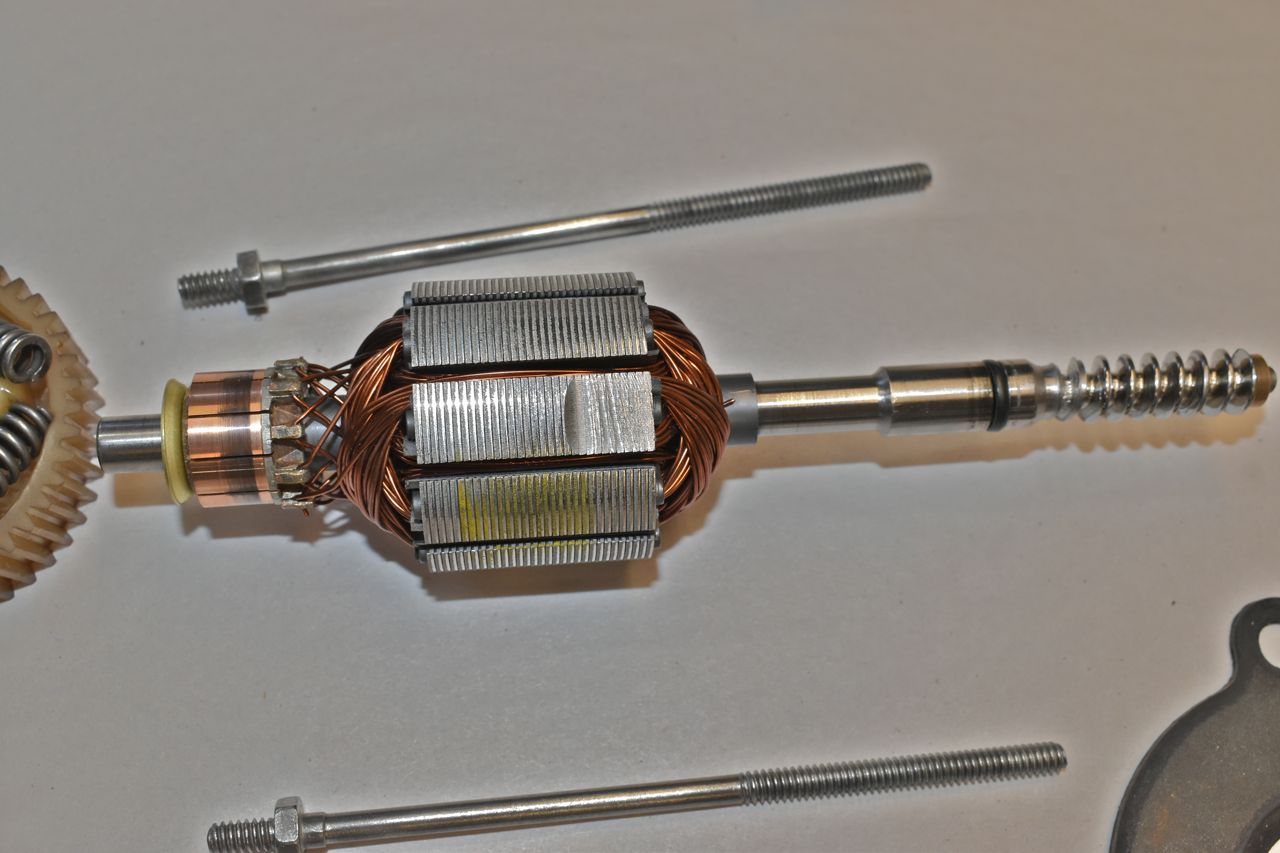
These pictures are the 1968 motor armature. There's a healthy splashing of windings completely filling the slots that have actual insulating liners installed in the slots. There's a grease splash shield protecting the commutator from residue and the armature is balanced by grinding material away as can be seen (flat ground spot). The armature also sports an O-ring to keep lubricant from the worm gear housing from entering the motor area. The worm gear is a nice ACME thread machined onto the end of the armature. There's also a bronze bushing at the end that the end play adjustment screw rides on. Now Ford didn't build these, they were made by Hancock for Ford. There is a lot of thought and quality built into this armature.
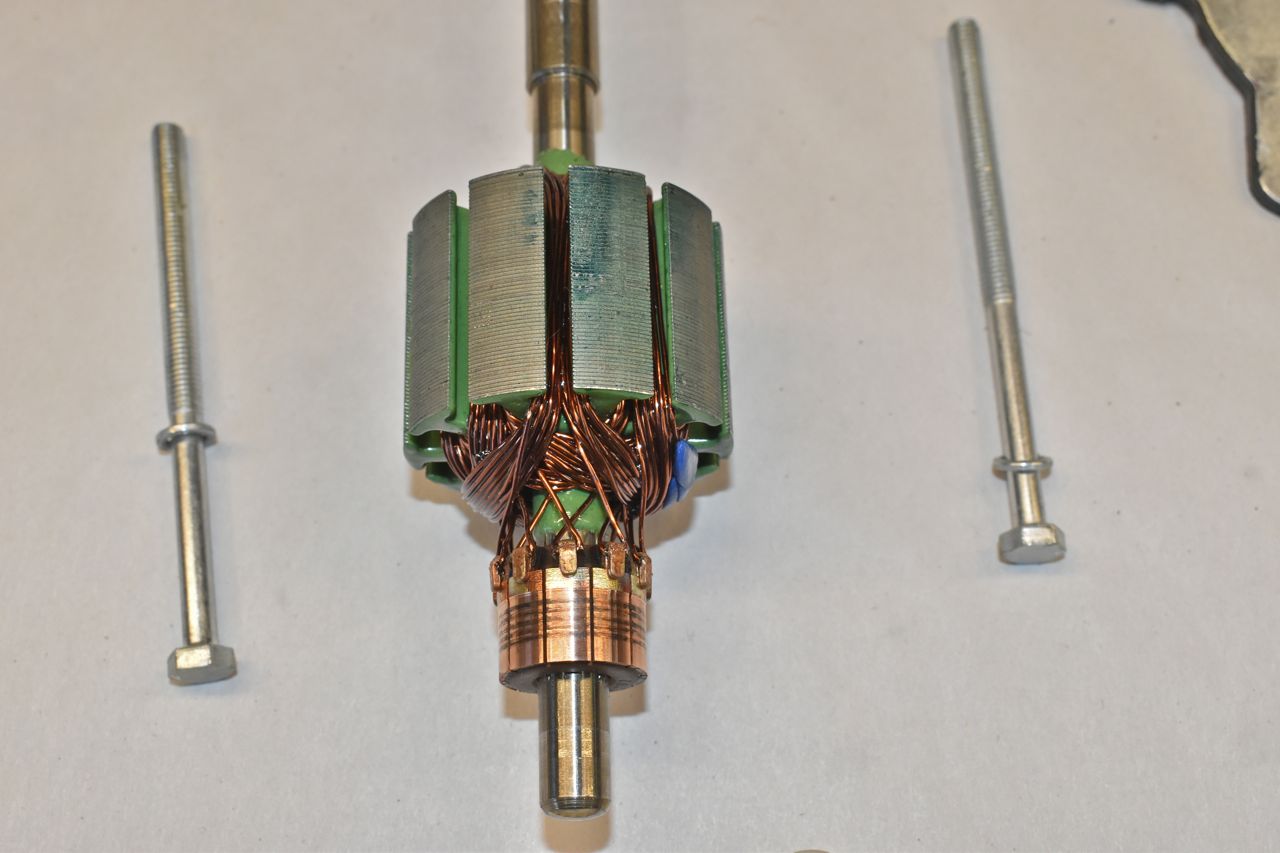
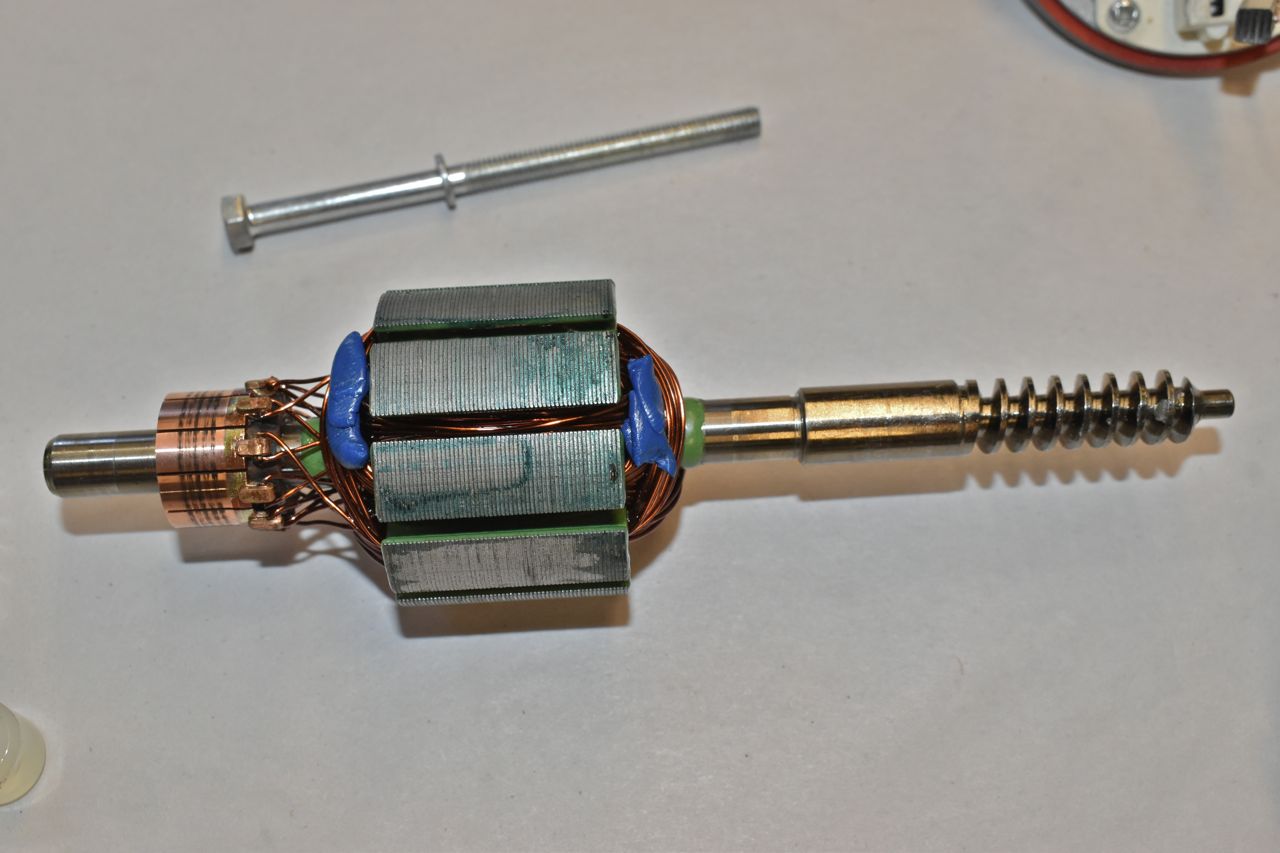 These pictures are the older NOS ACI motor armature. There's no hard insulation liners in the slots, instead it's an epoxy (green substrate). There's no O-ring, nor splash shield. The balancing is achieved by adding heavy hardening material (blue putty like substance) to the windings. This is a pretty shoddy way to balance. The worm gear machined onto the end is still a nice ACME thread so it has that going for it.
These pictures are the older NOS ACI motor armature. There's no hard insulation liners in the slots, instead it's an epoxy (green substrate). There's no O-ring, nor splash shield. The balancing is achieved by adding heavy hardening material (blue putty like substance) to the windings. This is a pretty shoddy way to balance. The worm gear machined onto the end is still a nice ACME thread so it has that going for it.
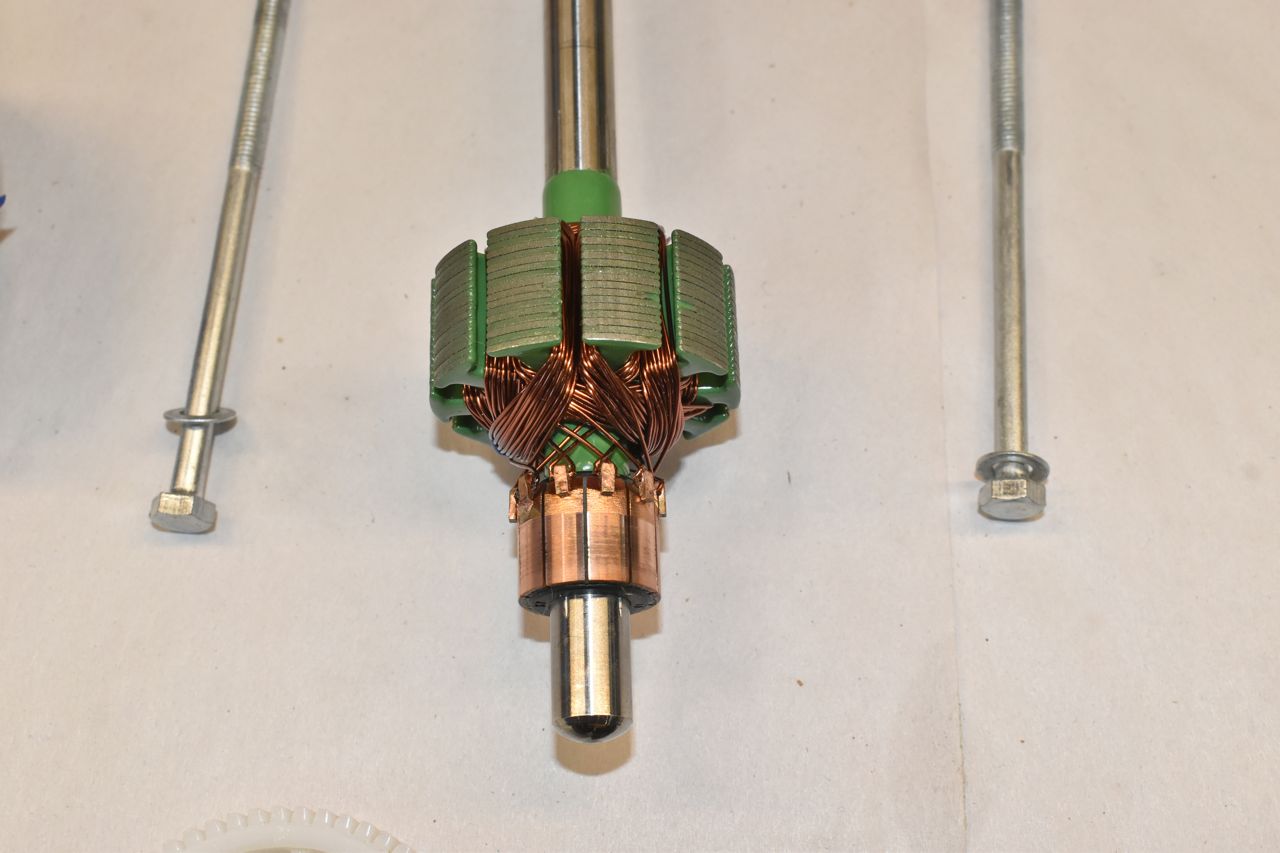

These pictures are of the newer ACI motor armature. Where do I begin. First the armature magnetic area is smaller. This means to develop the same torque as its older counterpart it needs to consume more amperage. However even as the speed is slowed down by the load (window) the back EMF lowers and current increases however since the magnets are also smaller there's still less B field to react against and current increases but still will not develop the same torque as its older brethren. The result is a slower window movement with increased current. The balance is still the same method as it's older counterpart (blue spooge).
Next you'll notice the worm gear threads are not standard ACME thread. It's more like a wood screw thread (thin and sharp) of which I'm sure the plastic worm gear will take issue with in due course of operation. You'll also notice the main shank of the armature steel shaft is thicker where the commutator is at. They saved a machining step (see the other two above for comparison), however this means the insulating layer between the shaft and the commutator bars is thinner and more likely to crack with heat generated from brushes and higher current.
This should be used in a childs toy and not in an automotive environment in my opinion. Let's move onto the brush/bearing end caps.
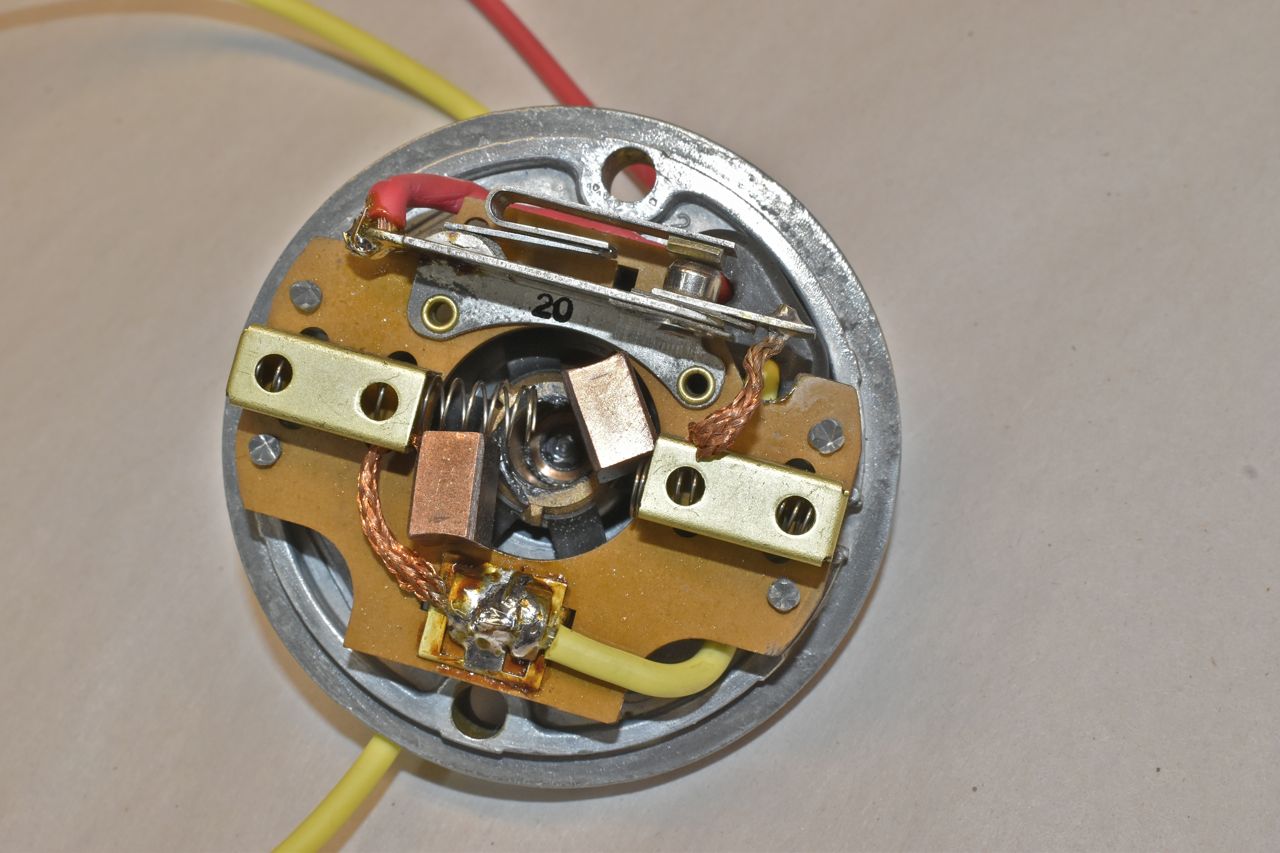
This is the 1968 motors end cap. It sports large semi-metallic brushes, sintered bronze (Oilite) bushing with end stop and a large heavy duty 20 amp circuit breaker. The only improvement I could see is instead of staking the PCB down, they could have drilled and tapped for screws. I like serviceability in everything, it doesn't matter how trivial it may seem.

This is the end cap from the older NOS ACI motors. Here they use smaller non-metallic brushes (shorter life) some kind of small circuit breaker that doesn't look impressive in my opinion. They do use a sintered bronze bushing and have the end plate tapped for screws. I do like that. They also use a red outer gasket, which is something the original 1960's motor lack, but I'll get into that more later. Also the lubrication ACI uses is a very light viscosity oil that started to run out of the motors on a hot day in the shop. I'm not sure what that was about but that also went and Magnalube was substituted.
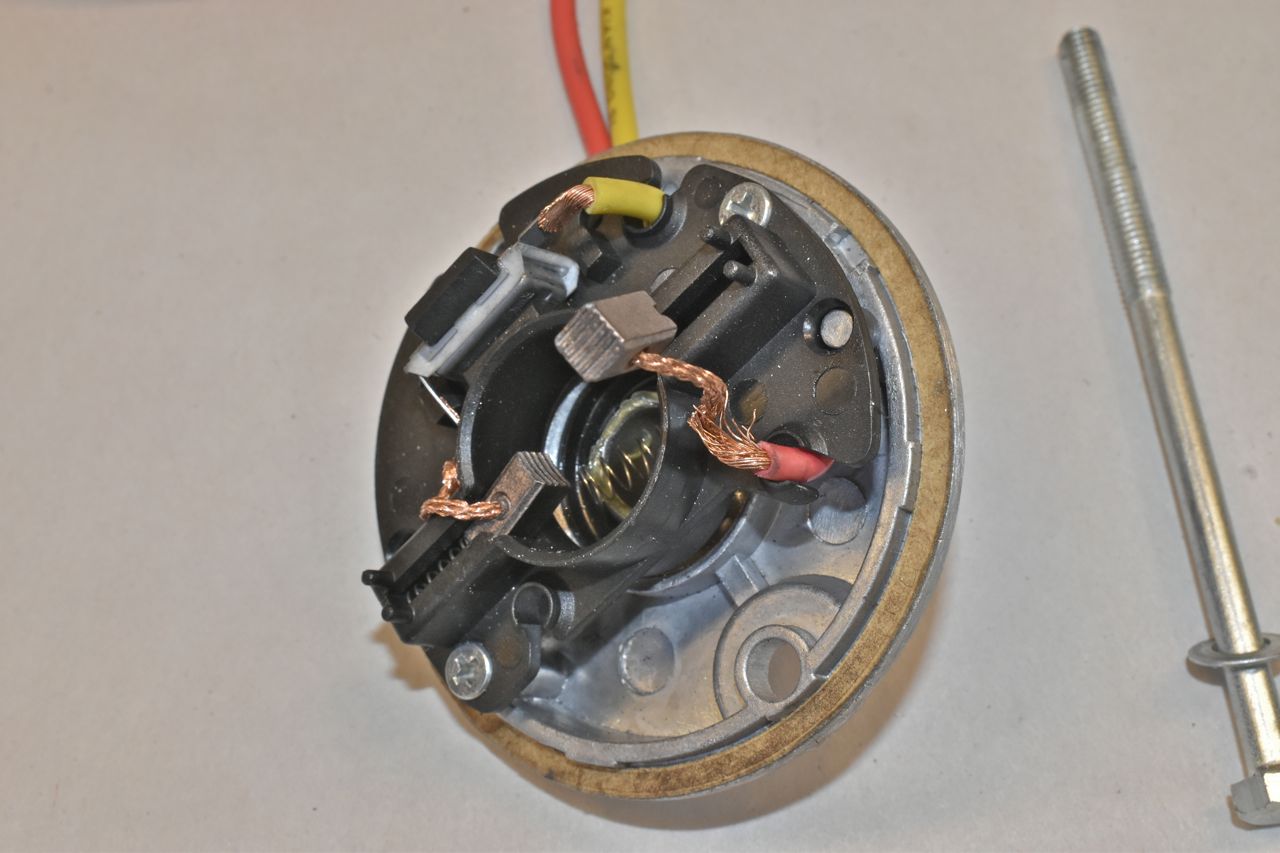
This is the end cap for the latest ACI motor. Just when I thought how much cheaper can you make this, well, they pulled no punches. No more soldering and the brushes and lead wires are pinch resistance welded. The gasket was also downgraded from a better fiber gasket to a generic paper gasket.
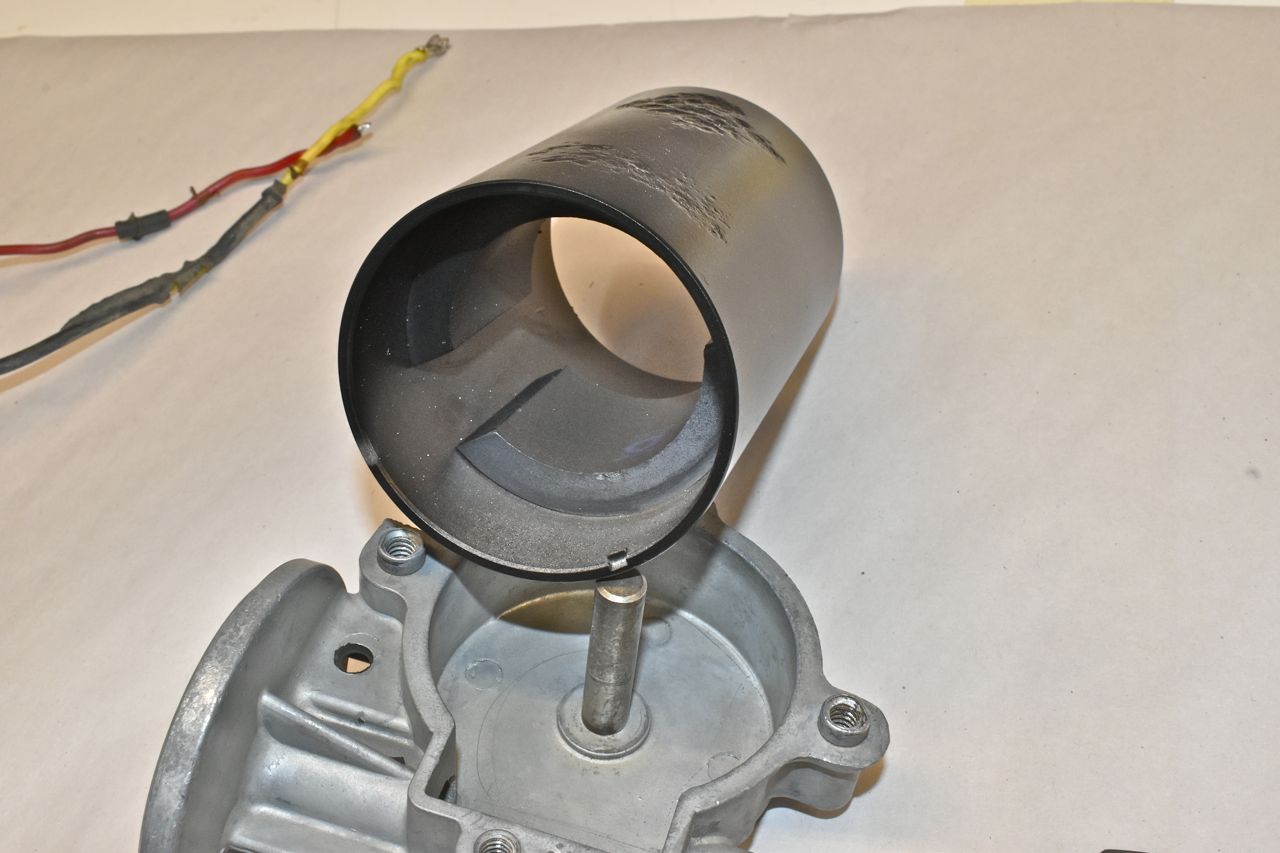
Here is the 1968 motor magnets and case shell. The magnet area matches the armature magnetic area. The metal shell looks like 11 gauge thick steel. You can see the pitting from the corrosion suffered because these old Ford motors are vulcanized and water creeps behind the rubber jacket and rots the steel away.
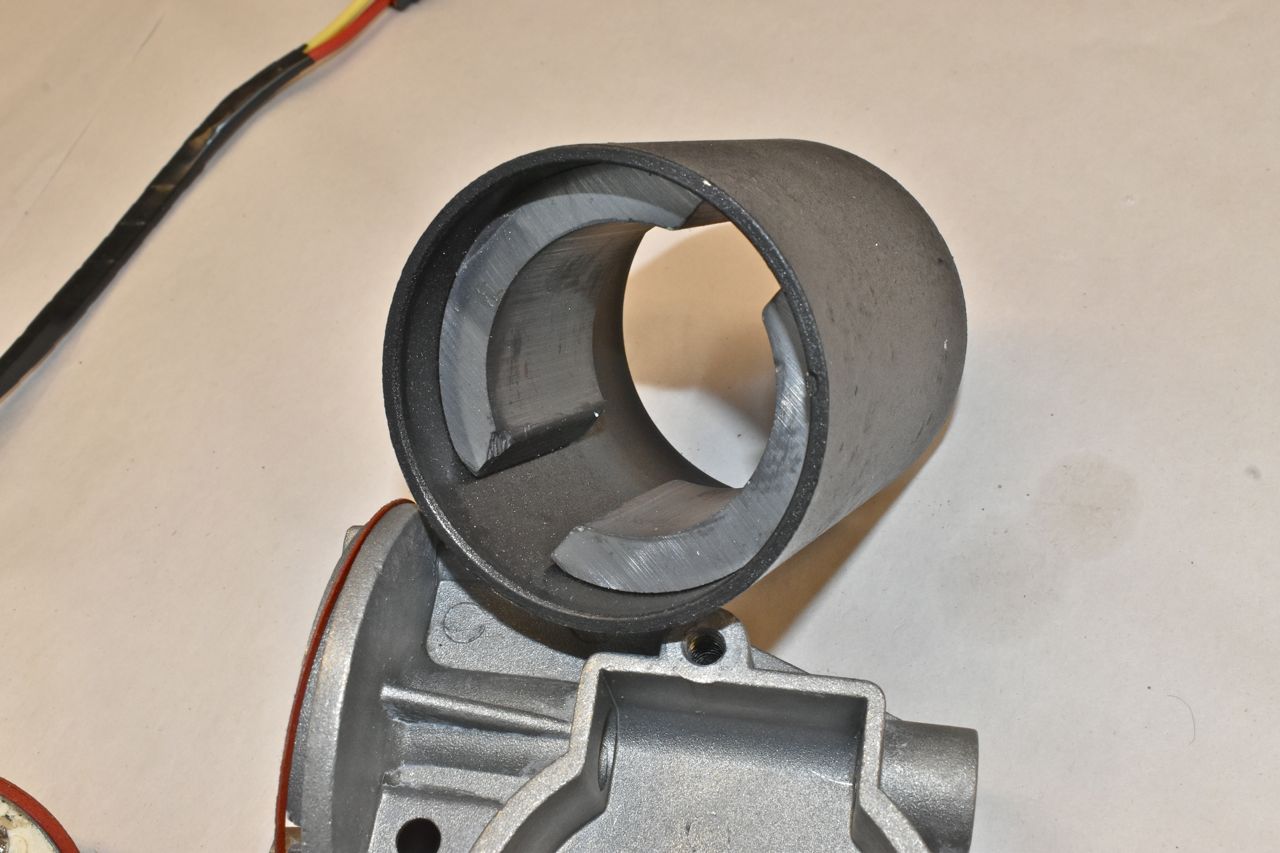
This is the older NOS ACI motor magnets and shell. It mimics the old 1960's motors very well in this regard.
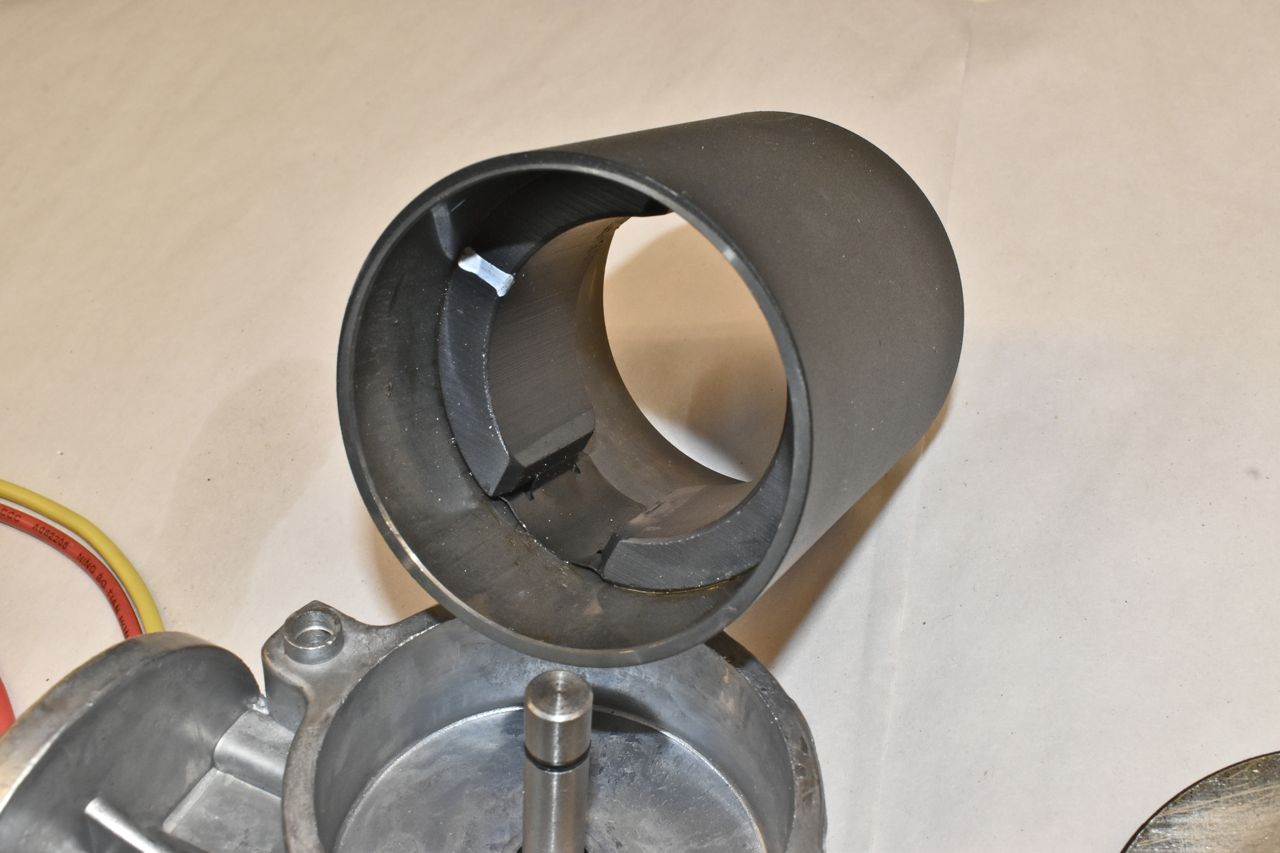
This is the newer ACI motor shell and magnetic. At least the shell is still thick like the original however the magnet's have shrunk drastically.
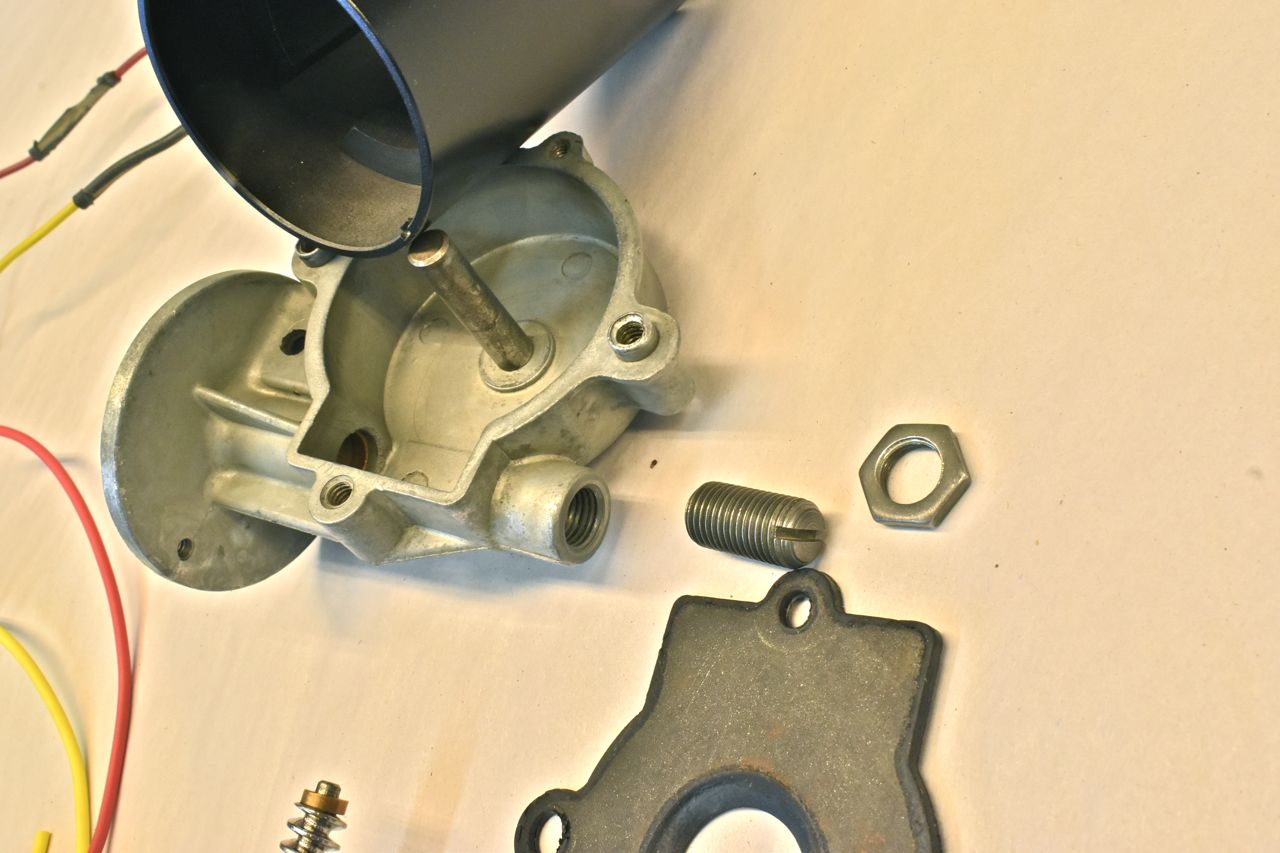
This is the 1968 motor worm gear housing. It's a cast aluminum piece with the aforementioned steel armature end play screw adjustment with jam nut.
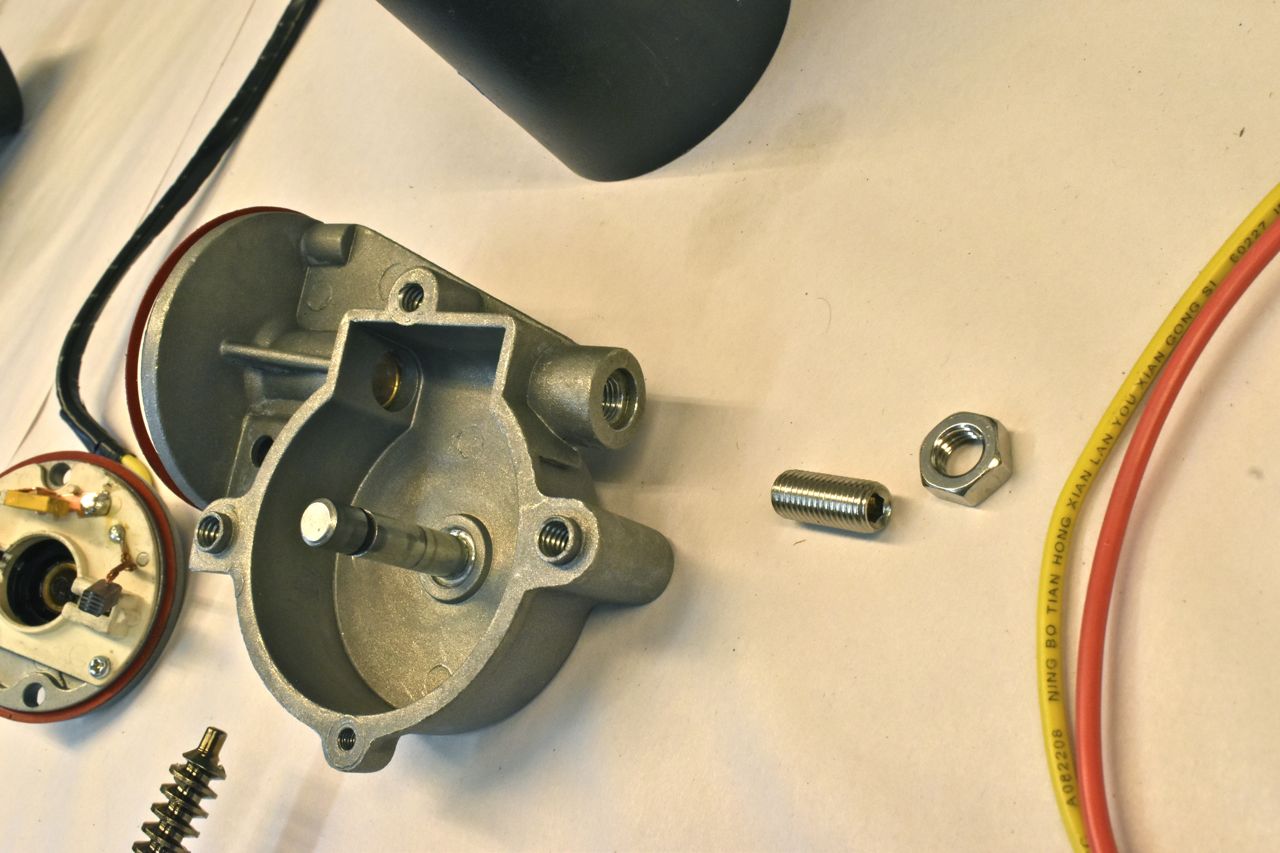
This is the older NOS ACI worm gear housing. Again a nice cast aluminum piece in the spirit of the original ones. Only thing I had to retrofit was a metal armature endplay screw and jam nut (McMaster Car).
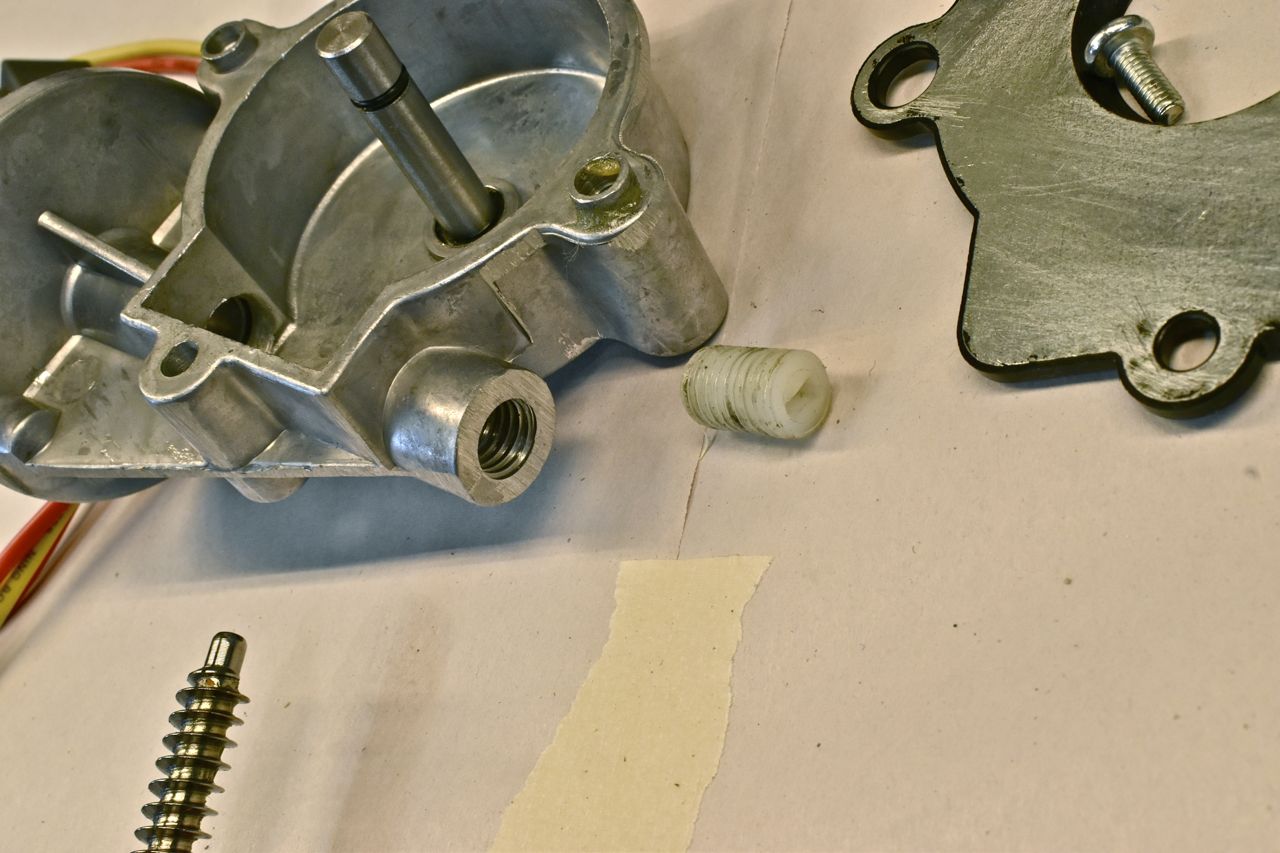
This is the newest ACI motors I bought and the worm gear housing appears to be a much softer die cast piece along with the plastic armature end play adjustment screw.
The last piece I want to address is the torque dampers built into the worm gears.
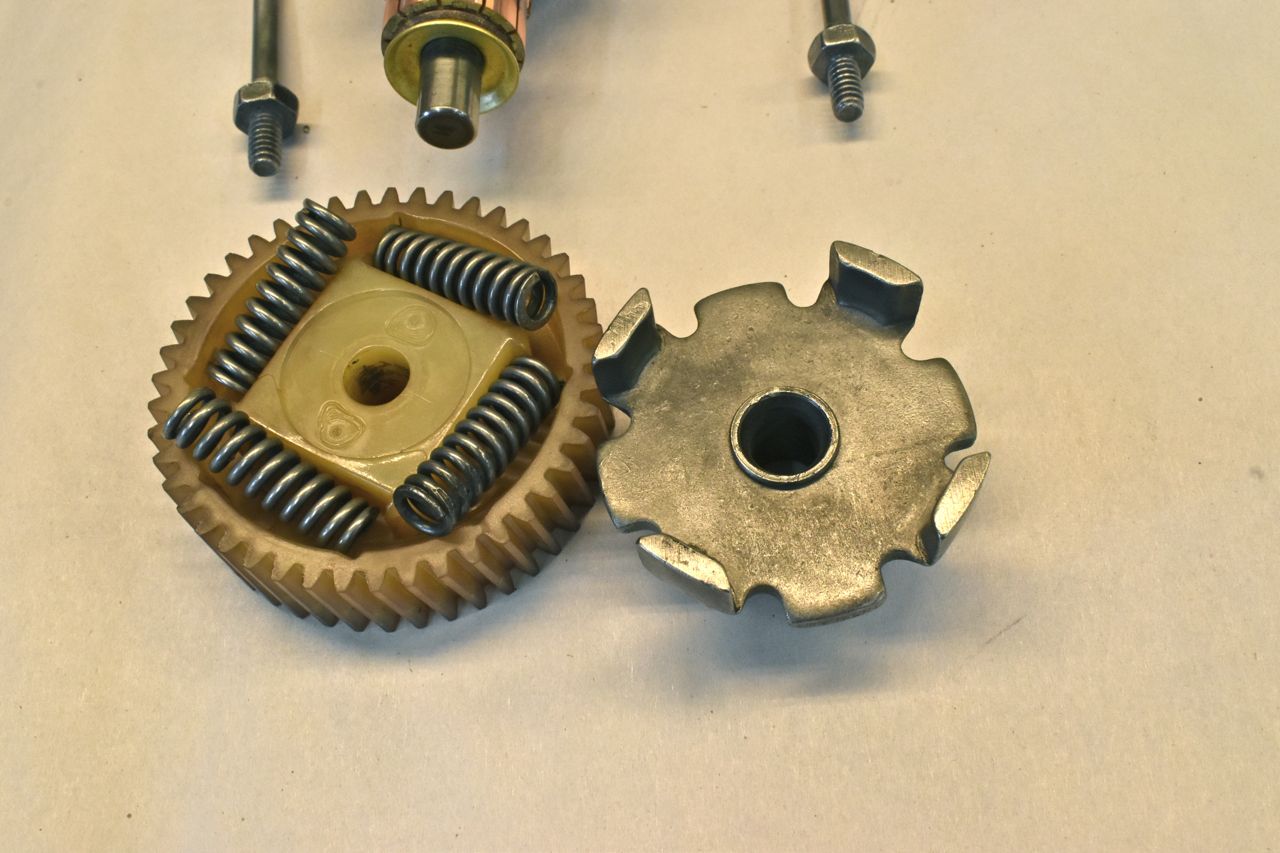
This is the original 1968 piece. Geeze those springs are a bear to compress. They're stiffer than a Briggs and Stratton valve spring. When this is assembled there is no play between the metal spur gear and the plastic worm gear. Some people are under the wrong impression that these devices are meant to stop injury by placing a hand, finger, arm or wrist into the window and raising the window. These are not meant for that. In fact there is nothing but the motors torque as the limiting factor by how hard the window would compress human tissue, muscle, bone, etc. These devices are meant to absorb mechanical shock from the window moving quickly then suddenly hitting a stop. It saves on the polymer rollers and gears. It's analogous to the torque damper springs in a manual transmissions friction disc.
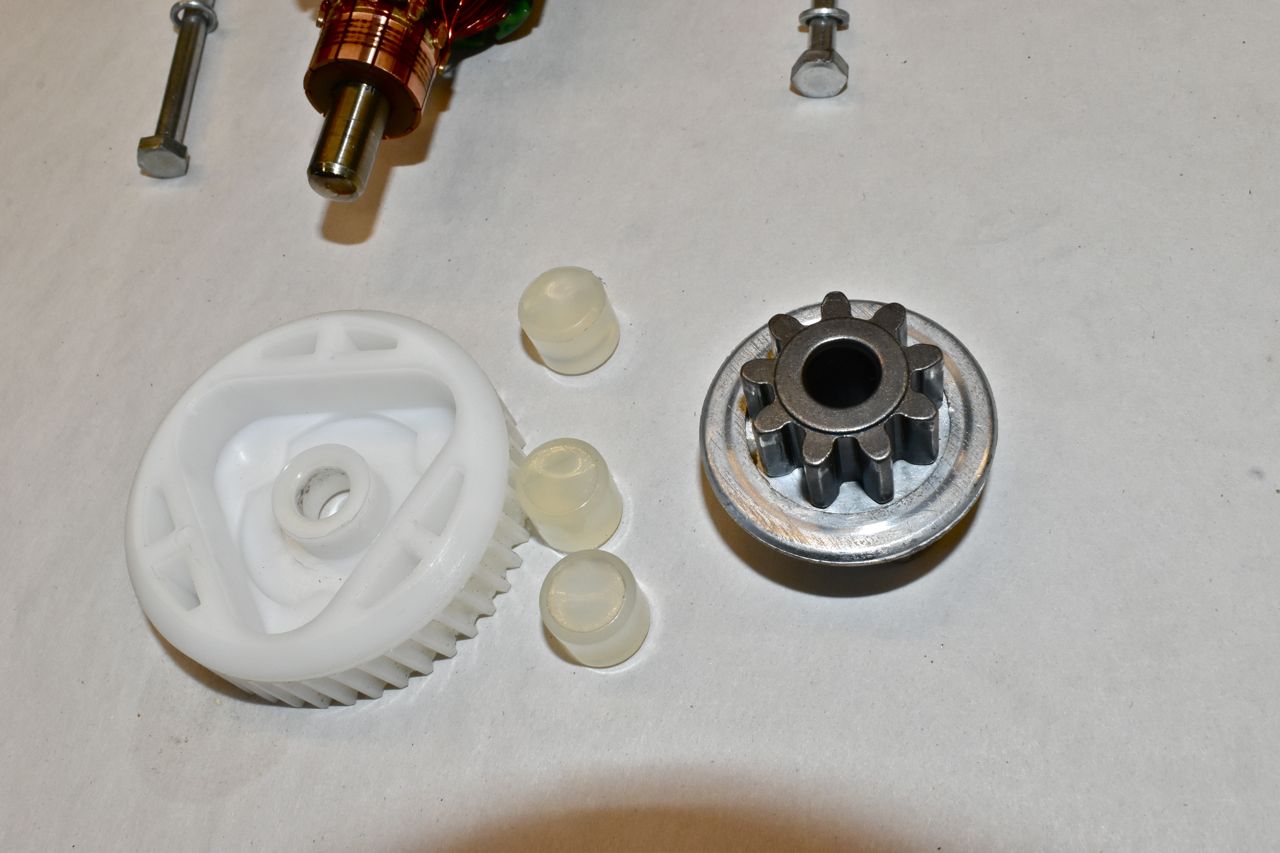
This is the older NOS ACI motor damper and this resembles more like what you'd find in a 90's and later Ford motor. Instead of stiff springs 3 softer round cylinders are used to absorb shock. However when assembled there is play between the metal spur gear and the plastic worm. This adds to more window glass play and possible rattles if the weather strips and window felt runs are worn out (The felt runs and weather strips adds a damping factor to the glass in the door).

This is the newest version of the ACI motors and well yeah…. there you go. I guess the upside is there's less observable play in the metal spur in relation to the plastic worm gear. The motor is smaller (less torque) so I guess they downgraded the rest of it to match.
In summary, I am not going to use the latest 4 ACI motors I bought because in my opinion they are subpar in design and quality. I will use the 8 older NOS ACI motors for both the '66 LTD and the '66 gal 500 XL. I will use the original 1968 motors for the 1968 XL. I do have two spares that came from the 1966 gal 500 XL rear quarter window regulators, they were rusted badly but I went through them and they are still viable replacements in the field.
Click here to continue to part 95